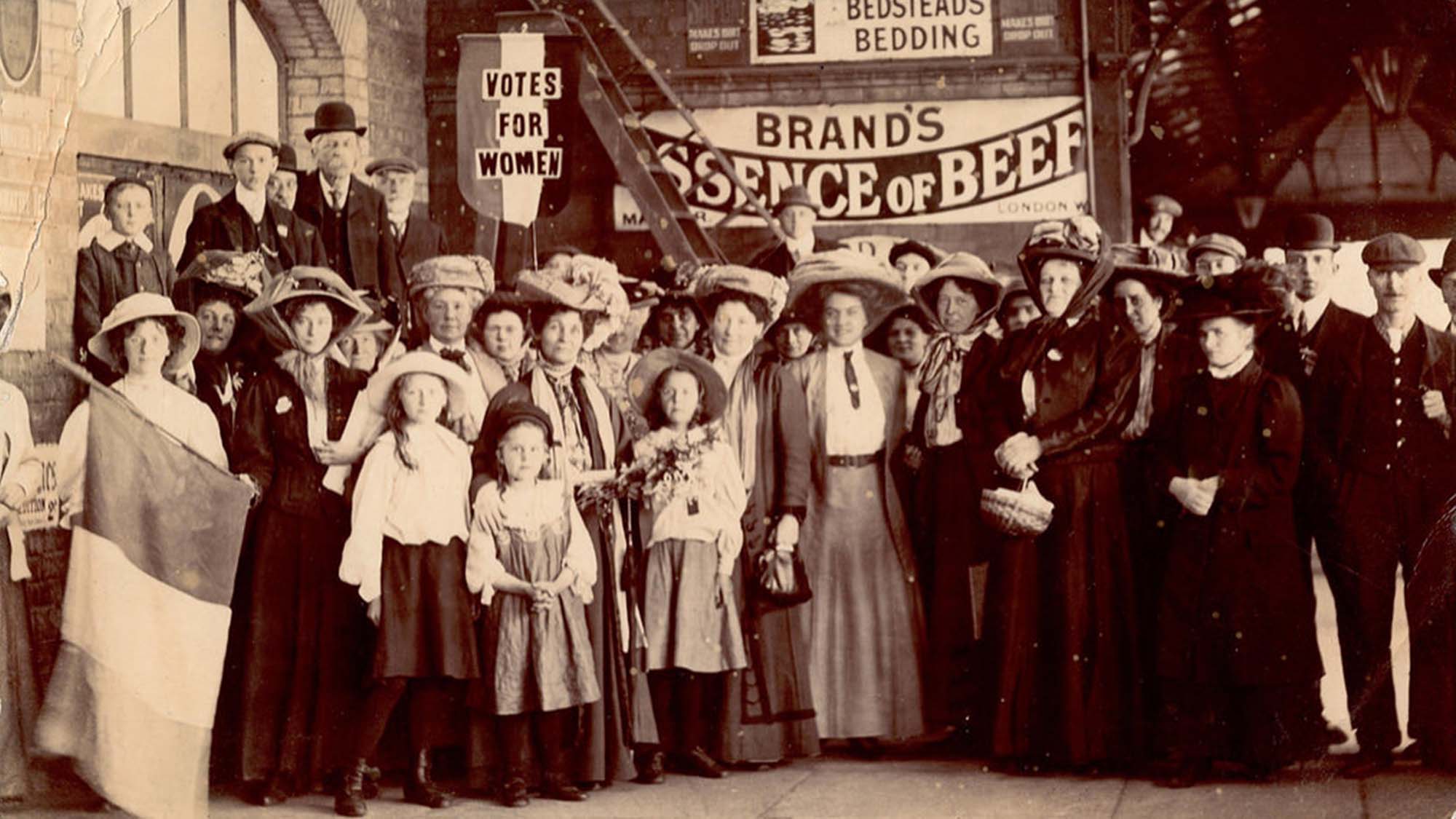Women's Suffrage - Frequently Asked Questions
Know your suffragettes from your suffragists. Answers to this and other frequently asked questions.
- What’s the difference between suffragettes and suffragists?
- What was the Representation of the People Act?
- Did the campaign continue for all women to have the vote?
- Were the suffragettes justified in taking such extreme action?
- Was the suffragette campaign confined to big cities?
- How did the media respond to the suffragettes?
What’s the difference between suffragettes and suffragists?
In the early 20th century the suffrage movement split into two main groups with different approaches to securing the vote for women. The suffragists, led by Millicent Fawcett, lobbied peacefully for the vote. Emmeline Pankhurst’s “suffragettes” used radical action to fight for the cause and shook Edwardian society to the core.
In 1897 17 regional non-political societies campaigning for the vote for women were grouped under the National Union of Women’s Suffrage Societies. Led by Millicent Fawcett, the suffragists’ chief tactic was lobbying MPs to raise the issue of the vote for women in Parliament. Emmeline Pankhurst set up the separate, more radical Women’s Social and Political Union (WSPU), whose motto was “deeds not words”. The Daily Mail dubbed its members “suffragettes”, as they embarked on direct action like window-smashing and other acts of sabotage to highlight their cause. Many were jailed and tortured for their defiant behaviour.
What was the Representation of the People Act?
The Act of 6 February 1918 granted the vote to women over the age of 30 who met a minimum property qualification. It also gave the vote to all men over 21. The Act increased the electorate from 7.7 million to 21.4 million, with women accounting for 47%. The age limit of 30 was included to ensure that women did not become the majority, after many men died during the First World War.
Did the campaign continue for all women to have the vote?
Emmeline Pankhurst and the Women’s Social and Political Union (WSPU) wound down their activities at the beginning of the war in August 1914. But her daughter Sylvia Pankhurst, who had split from the WSPU, continued to campaign for universal suffrage through the East London Federation of Suffragettes (ELFS). The Equal Franchise Act of 1928 finally granted all women over 21 the vote.
Were the suffragettes justified in taking such extreme action?
The extreme tactics of the suffragettes divided opinion – was arson and other sabotage morally justified? The suffragettes always insisted that direct action was planned to avoid harming anyone, but critics point to physical assaults on politicians like Winston Churchill and David Lloyd George, and say some bombs and arson attacks risked hurting innocent people even if this was not the aim. Militant tactics alienated the public and led some suffragettes to abandon the movement. However, some believe that some women were finally granted the vote in 1918 to prevent a return of militancy at the end of the First World War.
Was the suffragette campaign confined to big cities?
Outside London, big urban centres like Manchester and Birmingham were hubs of the suffragette campaign, but women from all over the country upped sticks and travelled long distances to take part. Details about this travelling population of activists are still emerging. Young women would journey from provincial towns and cities to London or another major city and find lodgings through an advert in a suffragette publication or the activist network. It was important for suffragettes to find accommodation through trusted contacts in order to stay safe. The WSPU also moved members around the country to fill spaces where they were needed and helped them go undercover to evade the Cat and Mouse Act.
How did the media respond to the suffragettes?
The suffragettes have often been called early marketing experts because they knew the impact of a powerful image and produced a slick campaign that promoted a single message: “Votes for Women”. They communicated with each other via postcards and maintained an extensive underground network. The magazine Punch often supported women’s suffrage and portrayed the Liberal government as having mishandled the issue, but most other media were hostile. Some historians believe Emmeline Pankhurst and the WSPU turned militant because the media were not paying enough attention to the suffrage campaign. If that is true, their strategy worked as their radical tactics earned them regular coverage, if not positive.





